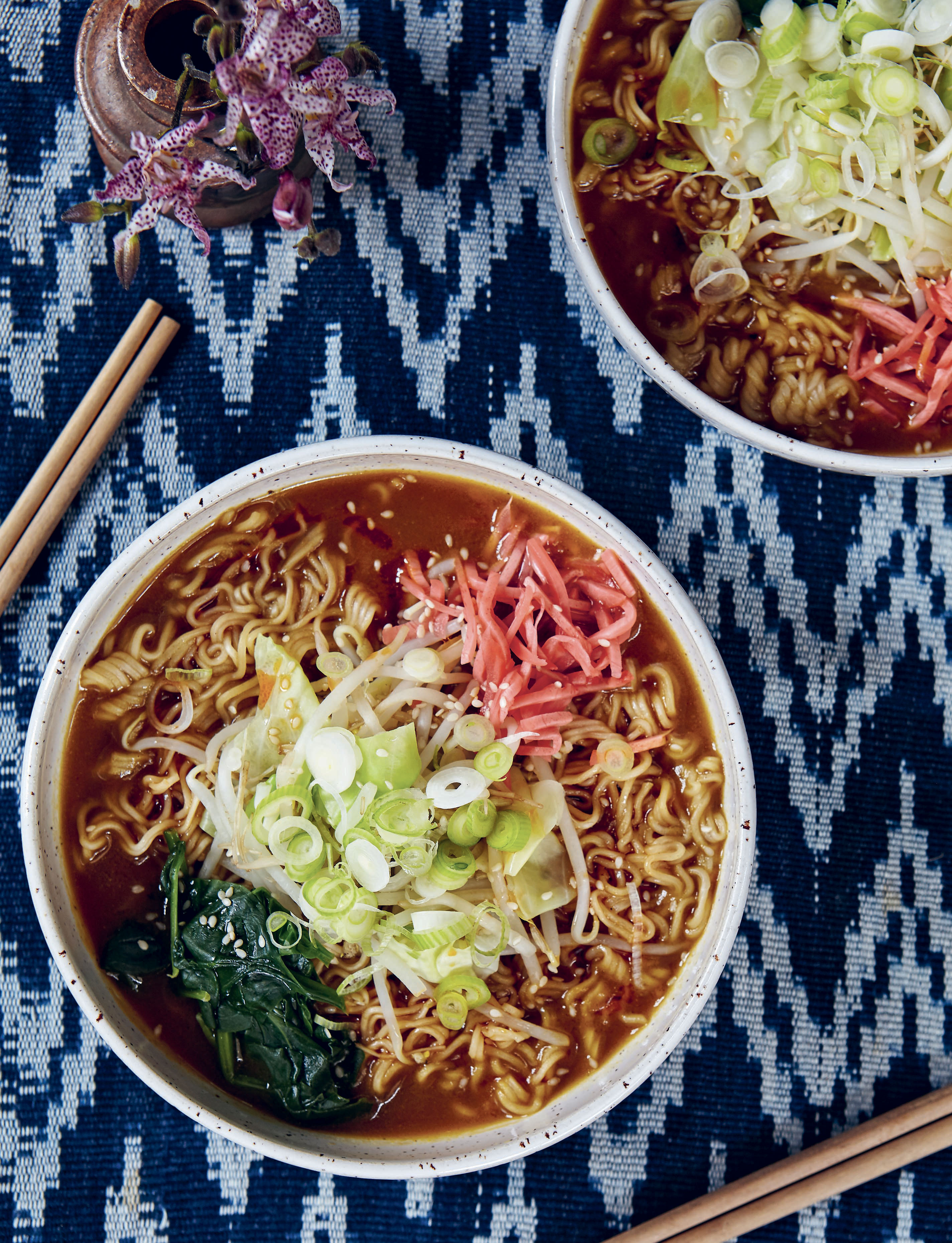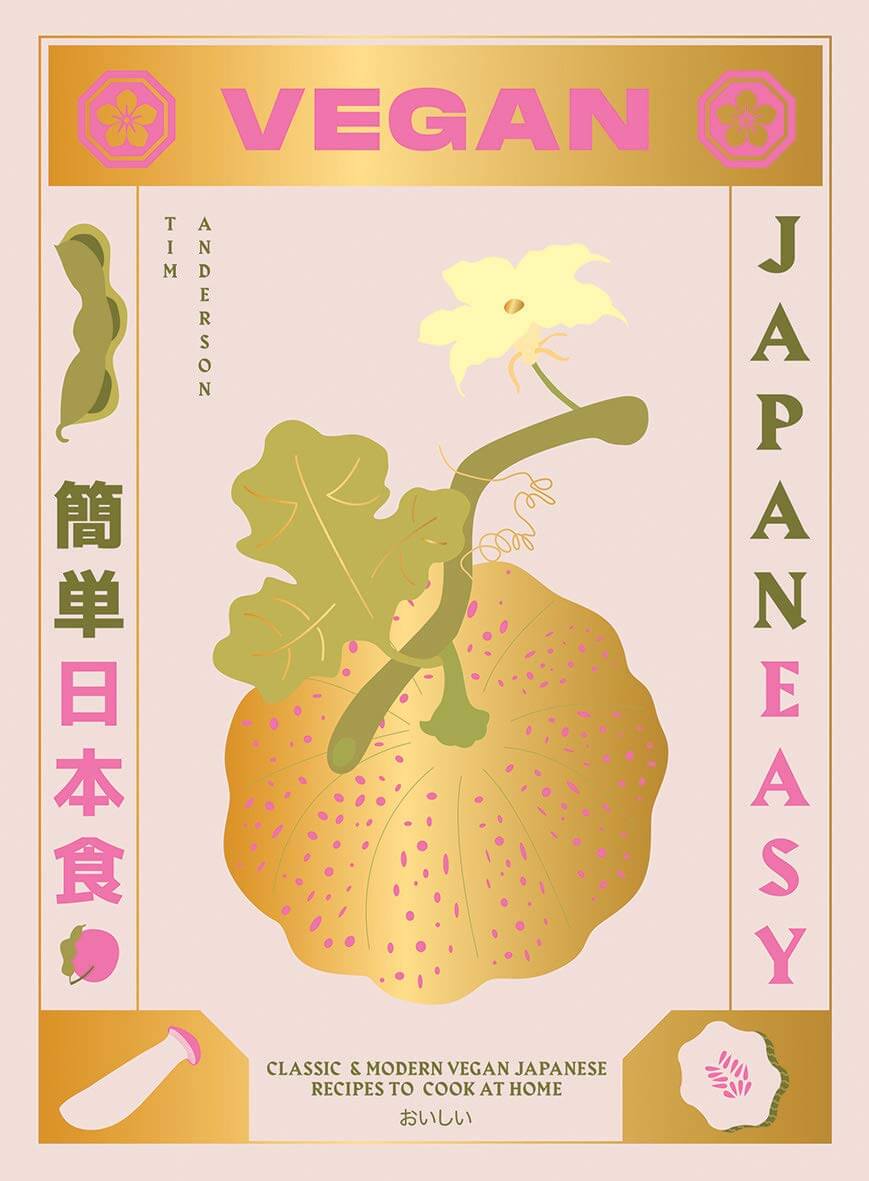Recipe for Vegan Curry Ramen by Tim Anderson
The American chef suggests serving curry broth with the noodles, a lighter vegan alternative to meaty broth.

‘Vegan JapanEasy: Classic & Modern Vegan Japanese Recipes to Cook at Home’ by Tim Anderson © Nassima Rothacker
Ramen is one of the integral Japanese dishes. Chef Tim Anderson proposes a curry version in his book Vegan JapanEasy: Classic & Modern Vegan Japanese Recipes to Cook at Home. In this book, split into five chapters, he shares 80 recipes that are exclusively vegan, drawing on and enhancing the many Japanese recipes that contain no meat-based ingredients. ‘This book won’t teach you how to make joyless “vegan versions” of Japanese meat and fish dishes, because that wouldn’t be good, and there’s no need to!’ declares the author in the introduction.
Here, he proposes a variation that brings together curry and ramen rather than curry and udon, as the Japanese version tends to. ‘I think the viscosity of Japanese curry broth makes it a natural partner for ramen, which is usually served with meaty broths that have a lot of body from fat and collagen,’ the chef explains.
Tim Anderson is an American chef who won the 2011 series of MasterChef UK. Having graduated in 2006 from Occidental College in Los Angeles, where he studied the history of Japanese cuisine, he then lived in Japan for two years, in Fukuoka. He now lives in London, where he runs two Japanese restaurants: Nanban Brixton and Nanban Central. Vegan JapanEasy is his latest book, following Nanban, JapanEasy and Tokyo Stories.
Serves 4
Difficulty: not too difficult
Ingredients
1.2 l dashi or seasoned vegetable broth
200 g Japanese curry roux
3–4 tablespoons soy sauce (to taste)
Hot chilli sauce (to taste)
100 g fresh spinach
½ hispi (pointed) cabbage, cut into strips about 1 cm wide
150 g bean sprouts
4 portions of uncooked ramen noodles
4 spring onions (scallions), finely sliced
A few big pinches of sesame seeds
60 g red pickled ginger
A few spoonfuls of chilli oil or sesame oil (to taste)
Method
Bring the dashi or broth to the boil and whisk in the curry roux, soy sauce, and chilli sauce. Let the mixture boil for a few minutes until it thickens up nicely, then reduce to a low simmer and add the spinach, and then place a lid on the pan. Bring a large pot of water to the boil, blanch the cabbage and bean sprouts for one to two minutes, then remove with a slotted spoon or a sieve. Put to one side.
Bring the water to a rolling boil, then cook the ramen noodles until al dente, according to the packet instructions. Drain well.
Divide the ramen among four deep bowls and ladle over the soup and spinach. Use chopsticks to gently stir the noodles through the soup, then top with the cabbage and bean sprouts, spring onions, sesame seeds, pickled ginger, and chilli or sesame oil.
Vegan JapanEasy: Classic & Modern Vegan Japanese Recipes to Cook at Home (2020), is written by Tim Anderson and published by Hardie Grant.

© Hardie Grant
TRENDING
-
The Tattoos that Marked the Criminals of the Edo Period
Traditional tattoos were strong signifiers; murderers had head tattoos, while theft might result in an arm tattoo.

-
Chiharu Shiota, Red Threads of the Soul
Last year, more than 660,000 people visited the retrospective 'Chiharu Shiota: The Soul Trembles' exhibit at the Mori Art Museum.

-
‘Before Doubting Others, Doubt Yourself. Who Can Truly Say a Dish Isn’t What It Used to Be?’
In ‘A Non-Conformist’s Guide to Surviving Society’, author Satoshi Ogawa shares his strategies for navigating everyday life.

-
The Story of Sada Yacco, the Geisha who Bewitched Europe
Described by Dazed magazine as the first beauty influencer, she has been restored to her former glory since 2019.

-
Ito Jakuchu's Naturalist Paintings
From 15 September until 14 October 2018, the Petit Palais showcased the artist's iconic ‘Images of the Colourful Realm of Living Beings’.





